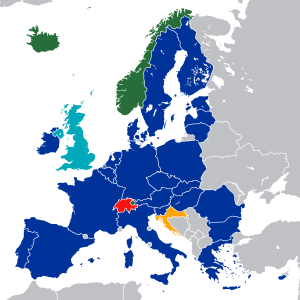Difference between revisions of "CE marking"
(Created page with "right|300px The CE marking is a mandatory process required by law by the specific Directives of the European Community (EC Directives) to be able to market, import and / or distribute the categories of products indicated in the same directives within the European Economic Area (EEA), regardless of where the product was manufactured. More precisely, CE marking rules are mandatory in: * 26 EU member states: Austria, B...") |
(No difference)
|
Revision as of 17:47, 22 March 2022
The CE marking is a mandatory process required by law by the specific Directives of the European Community (EC Directives) to be able to market, import and / or distribute the categories of products indicated in the same directives within the European Economic Area (EEA), regardless of where the product was manufactured.
More precisely, CE marking rules are mandatory in:
- 26 EU member states: Austria, Belgium, Bulgaria, Cyprus, Czech Republic, Denmark, Estonia, Finland, France, Germany, Greece, Hungary, Ireland, Italy, Latvia, Lithuania, Luxembourg, Malta, Netherlands, Poland, Portugal, Romania, Slovakia, Slovenia, Spain, Sweden
- 3 EFTA member states: Iceland, Liechtenstein, Norway
- 1 EU member state the EEA agreement provisionally applies to: Croatia
This means that both manufacturers and distributors are obliged to follow this process, called "CE marking", which is aimed at ensuring that the products in question are "safe" for the final consumer.
Regulated products also include: electrical and electronic equipment (EEE), radio and telecommunications equipment, machines and assemblies of machines, medical devices, toys, building materials, fixtures, pressure vessels, gas appliances, safety devices, etc.
The CE marking, unlike what the name might suggest, is a particularly articulated process, which goes beyond the mere compilation of a technical file or the affixing of the so-called "CE mark" on the product label. It includes in fact a necessary analysis of the safety risks, evaluation of results, identification and adoption of technical and organizational security measures, periodic review of information relating to the safety of the product and of each individual component, etc.
Added to this is compliance with certain international standards ("harmonised standards"), and often also the intervention of a notified body (NB) and the carrying out of laboratory tests on the product to guarantee its safety characteristics.
Be aware that the mere affixing of the CE mark without complying with all the other obligations constitutes a crime and seriously endangers the safety of consumers and beyond. At this regard, our team is ready to help manufacturers and customers in order to better understand CE marking process and to give consultancy services when needed.
Not just CE Marking...
CE Marking is not the only law related to selling safe products in Europe. Other mandatory laws apply for General Product Safety, Textiles labels, Food contact materials, etc.
Do you need help for CE Marking?
How we help manufacturers, distributors and importers:
We offer consulting on CE marking to manufacturers, distributors and importers. This also includes:
- identification of the obligations for your specific products
- technical support in preparing the necessary documentation
- consultancy for the identification and implementation of safety measures (e.g.: selection of safe materials and components, design changes for safety, addition of protections, photocells and interlocks, safety operating procedures, personal protection equipment, affixing written warnings and pictograms, etc.).
How we help customers:
In addition to indirectly helping consumers by offering advice to manufacturers to market safe products, we provide support to consumers by providing them with information about the meaning of the CE marking and useful advice on how to choose compliant and therefore safer products.
